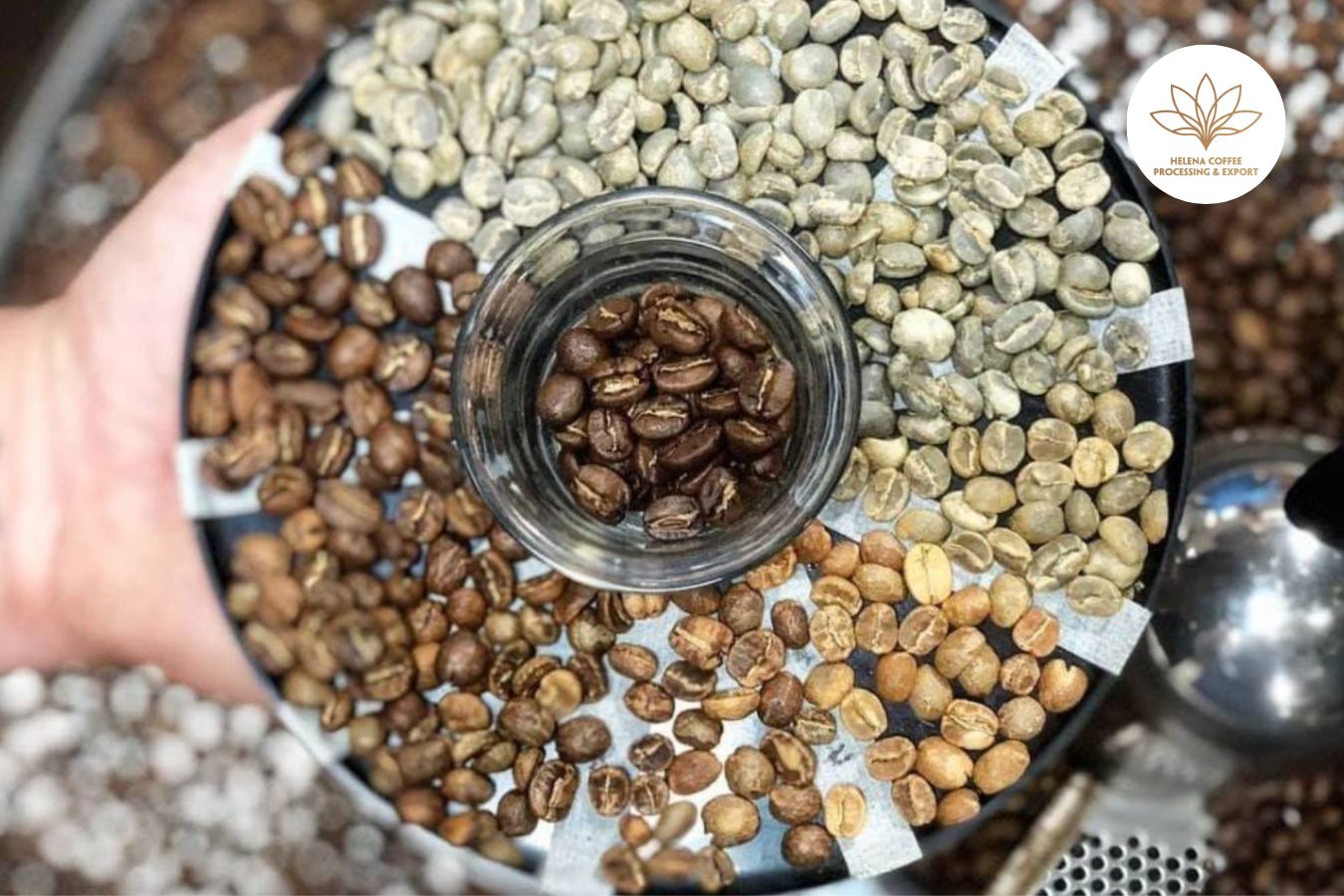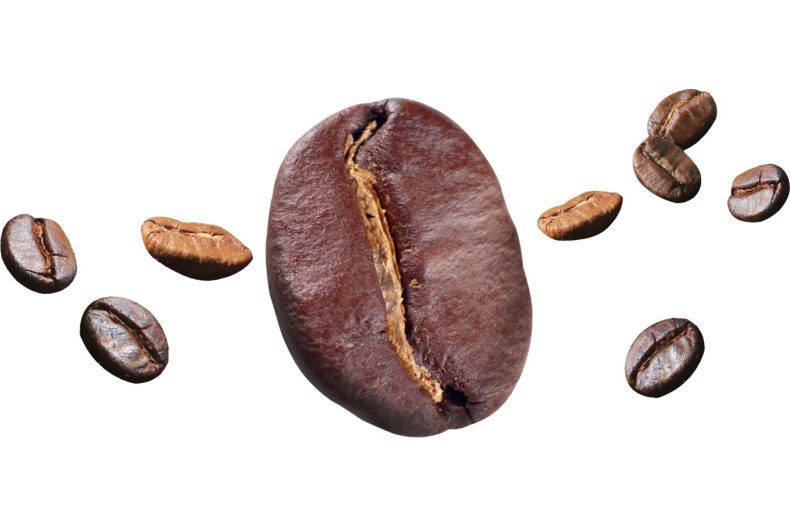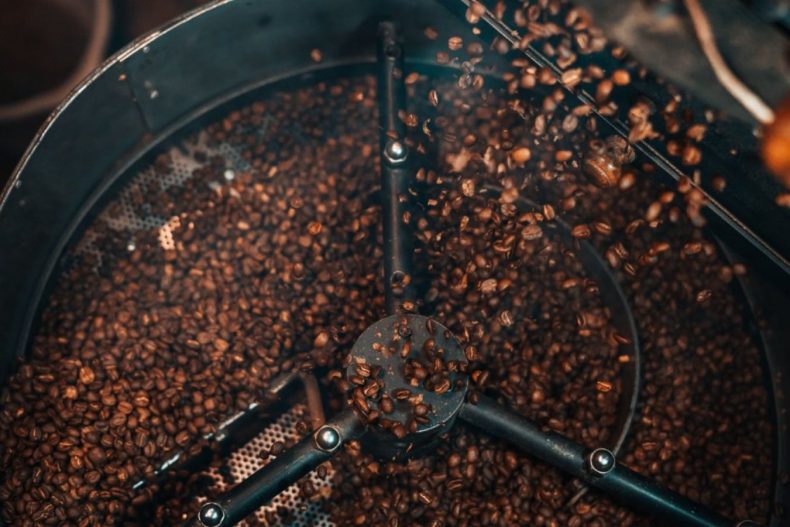
Coffee roasting equipment
Roaster for the Stovetop
Most roasters are only getting started with this instrument. On a gas burner, you can use a Whirley-Pop roaster or pan. This is a simple and inexpensive technique to begin roasting coffee. However, controlling your roasting process with these technologies is challenging and time-consuming.
Whirley-Pop is similar to a pan, but it comes with a pre-attached cake to move the coffee around and a hinged top to monitor the color. It reminds me of a popcorn machine design.
To ensure that the roast coffee beans evenly, you must move them often. You should be ready since this instrument produces a lot of smoke throughout the roasting process. Being outside is the easiest method to roast using this utensil. On the other hand, the wind might lose heart and fail to attain a constant temperature.

Roaster for the Air
The Air Roaster roaster heats the coffee by using hot gas. This is a standard roasting method at home, and in fact, more people begin with it than with oven roasting (Whirley-Pop). It’s more consistent and more straightforward to handle. However, it does not allow you as much control over the roasting process as drum roasters do.
Roasting Drum
A coffee roaster with a drum revolving slowly from the coffee bean is a Drum Roaster in the coffee lexicon. They can generally roast more coffee at once than an air roaster or a stovetop roaster. You may also manipulate other variables, such as temperature. They may be equipped with smoke-blocking technology, which can be used indoors.
Roaster for the Air
The Air Roaster roaster heats the coffee by using hot gas. This is a standard roasting method at home, and in fact, more people begin with it than with oven roasting (Whirley-Pop). It’s more consistent and more straightforward to handle. However, it does not allow you as much control over the roasting process as drum roasters do.

Roasting Drum
A coffee roaster with a drum revolving slowly from the coffee bean is a Drum Roaster in the coffee lexicon. They can generally roast more coffee at once than an air roaster or a stovetop roaster. You may also manipulate other variables, such as temperature. They may be equipped with smoke-blocking technology, which can be used indoors.
Thermometer/Bean Probe
Coffee dictionaries, sometimes known as silk shells, are thin layers of dry skin or trash on the Chaff Tray or Silverskin beans. During roasting, the silk shells will peel away.
A Coffee Probe/Thermometer is another Bean Probe/Thermometer. Some drum roasters may be fitted with a thermometer. These tools will assist you in keeping track of the progress of your coffee throughout roasting.
Weigh
Many roasters choose to compare the volume of the beans before and after they’ve been roasted. To assist them in comprehending the variations in their coffee beans roasted.

Apps & the Roasting Log
What if you’re fortunate enough to learn how to roast coffee but can’t recall how you did it? Recording your roasting time, temperature, test point/thoughts on coffee, nuts, and other items can aid you in recreating the roasting process and experimenting with different sorts…
You may use a notepad or one of the various applications, like Roast Buddy, Roastmaster, and Typica (though it’s more geared toward pros).
Profiles for roasting
Roasted Lightly (Light Roast)
The coffee beans will have passed the First Crack stage at this roasting level. This amount of roasting will most likely bring out the coffee’s fruity flavor and unique acidity. Coffee at this roasting degree, on the other hand, is more likely to lack sufficient growth and smell grassy or acidic.
Roasted Dark
The coffee beans will pass the second Crack. Coffee has a darker, less acidic, and more bitter flavor at this degree of roasting. Although dark roasted coffee is rare in the third-wave coffee business, it may still be found.

Espresso, Filter, and Omni Roasts
Some roasters will roast the coffee slightly darker if used as espresso or a little lighter if used to brew drip. Other roasters want to find a roasting configuration that they believe is suitable for both espresso and drip coffee: this is called Omni Roasts.
Stages of coffee roasting
The temperature of the charge
According to the Coffee Dictionary, Charge Temperature is the temperature at which the coffee roasting drum is heated for the first time. So, that’s OK; it’s not a roasting phase, and you can’t manage it with many home roasters.
Increasing Rates (RoR)
Temperature Increase refers to the rate at which the temperature rises. This is the pace at which the temperature inside your roaster rises. Most home coffee roasters will not be able to regulate this directly.
On the other hand, Charge Temperature is a crucial phase in the business. It aids in managing acid levels, “body,” and other factors. As you grow more engrossed in the roasting process. You’ll be interesting to see how this impacts the final flavor of the

Yellowing
This happens early in the roasting process when your coffee beans start to dry out. Soon, they will begin to turn brown. That’s the state that Yellowing describes.
Roasted Lightly (Light Roast)
The coffee beans will have passed the First Crack stage at this roasting level. This amount of roasting will most likely bring out the coffee’s fruity flavor and unique acidity. Coffee at this roasting degree, on the other hand, is more likely to lack sufficient growth and smell grassy or acidic.
Roasted in the middle
The coffee beans will reach only the Second Crack stage.
Roasted Dark
The coffee beans will pass the second Crack. Coffee has a darker, less acidic, and more bitter flavor at this degree of roasting. Although dark roasting is rare in the third-wave coffee business, it may still be found.

Resting
After roasting the coffee, you should let the coffee rest and degass for a few days before grinding and incubating.
Development
The term refers to the level of development that the compounds in your coffee beans have undergone and the roasting phase when those compounds are developed. Matt Perger of Barista Hustle argues that the result refers to the inner part of the coffee bean and the level of roasting (light/dark) outside.
Coffee beans
The term in this topic is so big that we have to divide it into, coffees, and the defects of chickpeas (although you hope you won’t have to solve those problems).
Green Coffee Beans
Green beans are unroasted coffee beans or, more accurately, green coffee beans.
Peaberry
Peaberry coffee is also known as Culi coffee. You usually see two beans of coffee in a ripe (cherry) coffee. However, about 5% of cases of two coffee beans are not separated. This leads to a large, round coffee bean. Although technically a defect, some argue that this creates a unique taste.

Chaff / Silverskin
The coffee dictionary is called the Small Skin Around the Green Coffee Beans. It will fall off during roasting, also known as silk shells.
Ripe Coffee Berries
Coffee Cherry is technically a berry. This sweet fruit contains seeds or coffee beans. When ripe, it is usually bright red. However, some varieties are yellow, orange, or pink.
Coffee varieties/species
Robusta & Arabica
Robusta and Arabica are the leading coffee species. Although there are hundreds of species out there, it’s unlikely you’ll come across anything other than these two. Arabica is known for its more fragrant and refined taste.
It is also not much resistant to diseases and pests. Robusta is known for its bitter, high-caffeinated, and hard taste. The majority of third-wave coffee is Arabica, but there is also a trim level of interest in fine robustas.
Coffee Variety
In each species, there are many similarities with their distinct characteristics. These include taste, growing area, and coffee bean size. Popular coffee varieties include Caturra, Catuai, Bourbon, and Typica.

Hard & Soft Beans/Bean Density
Coffee has a hardness or density of coffee beans, which gives us information about the quality of coffee and how we should roast coffee. Hard coffee grows more slowly, creating more complex flavors. They can also be burned faster and at higher charging temperatures.
Height
In general, the higher the altitude, the denser the coffee beans and the better the quality of the coffee. However, this is not always true.
Process
This is the method by which the beans are separated from the coffee. They affect the taste of coffee and how you roast them.
Wet/Washed: The meat of the coffee fruit is removed, and then the coffee is dried. This method of preparation makes us coffee with a cleaner taste.

Dry/Natural: Coffee is dried slowly in the sun while still in cherries. These produce a sweet fruity taste. These coffees will often not be of quality due to uncontrolled and inconsistent fermentation or high quality due to poorly dried and supervised by the producer.
On the contrary, if there is a consistent, experienced process, this processing method produces a delicious cup of coffee.
Honey & Pulped Natural: These coffees have been dried/dried with silk shells or part of the outer shell still sticking to the coffee beans. The more sticky the cherry peel, the greater the coffee’s sweetness and “body.”
Coffee Origin
Different countries have different tastes, elevation and soil characteristics. Knowing the country of origin will help you see the taste characteristics in advance and, as you become more proficient, how to roast it.
Single Origin & Micro Lot
A coffee with a Single Origin comes from a specific region in a country or sometimes even a particular farm.
Coffee Mix (Blend)
The term blend coffee is called mixing coffee beans from Single Origin. Often to achieve the more attractive taste and supplement any “lacking.” This can be done before or after roasting.
For example, coffee harvested before the taste will be significantly reduced. That’s why you should use the blend to use coffee to make up for the missing flavor.
Defects of roasted coffee
Baked/Stalled
This occurs when the temperature in the oven rises or falls around the First Crack phase. It creates a bread-like taste in a cup of coffee.

Scorched
Scorched is also known as burning the surface of coffee beans. This is normal because the charge temperature is too high. If you see this, start roasting with a minor fire.
Flavor characteristics of roasted
Acidity &Sourness
The acidity in coffee creates the same feeling on your tongue as when eating a peach or a slice of lemon. There are many different types of acids in coffee. Sour taste is often the desired taste of coffee drinkers. If it’s too sour or spoiled, it’s a fundamental mistake. This taste is adjusted through the coffee roasting.
Body
This is the taste of the brewed coffee. It can be described as round, smooth, plump… It can increase through the coffee roasting process.

Sweetness
This is something that every coffee drinker wants. This taste is also enhanced through the roasting process.
Bitterness
Bitterness is often considered a negative taste in specialty coffee, although not always. The coffee is roasted. You can see this taste.
Nutty, Spices, Floral, & Fruity
The general characteristic of coffee you will see is that some coffee beans tend to have a specific flavor structure.
Plasticity (Toastiness)
Taste characteristics are most associated with the roasting process. Therefore, this is the most common feature in dark-roasted coffees.
Grassy
This phenomenon shows that coffee is underdeveloped.
Faded
The taste and smell are significantly reduced. This usually indicates that green coffee is old.
HocaGroup has come across all the concepts that a coffee learner needs to know if you are a coffee learner. This can be considered a dictionary of coffee that is the subject of what to read once.
Of course, the roasting world is much larger than this list. If you’re interested in becoming a professional or semi-professional roaster, you’ll need to look beyond this term board, but it’s a topic for another article!
Reference source:
- www.perfectdailygrind.com/ – What Is First Crack and How Do You Recognise It?

